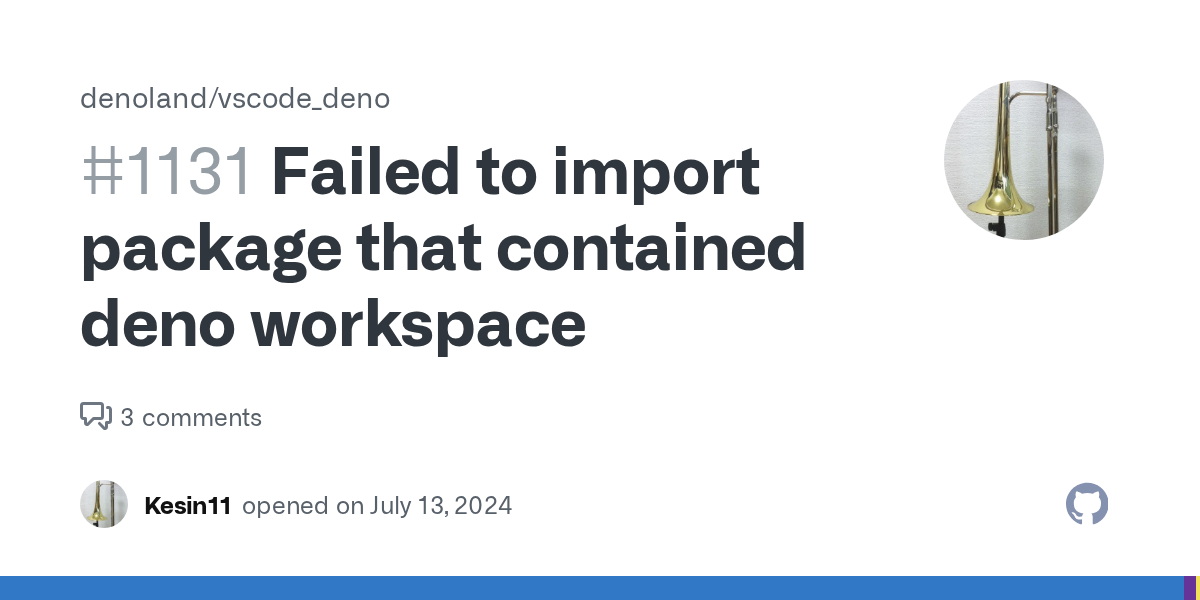How to set up VS Code with Deno workspaces
I'm trying workspaces, introduced since Deno 1.45. It works well with the
deno CLI, but in VS Code, red underlines show up on import statements. (I guess this issue is relevant?) Is it a bug of Deno's LSP or my mistake? Is there any best practice to set up VS Code with Deno workspaces?GitHub
Describe the bug Deno workspace feature (not VSCode workspaces) supported from v1.45. I tried minimal sample code that written in Deno document, however importing package that contained workspace r...

